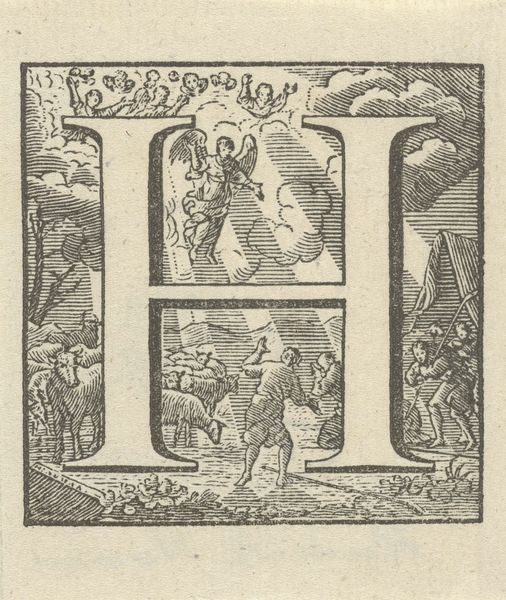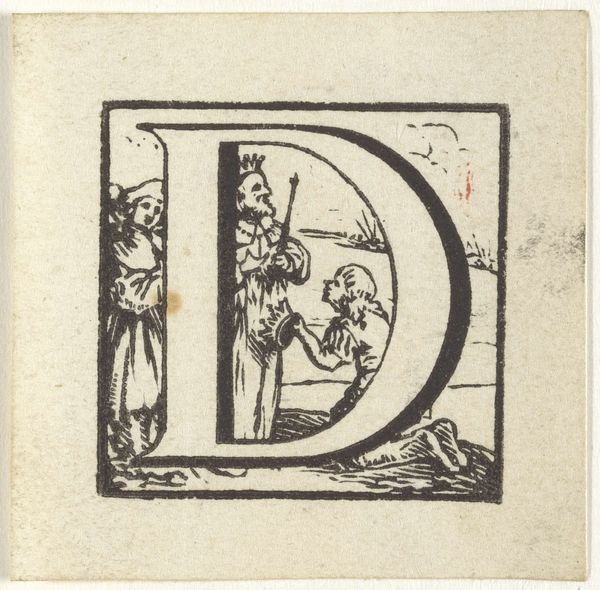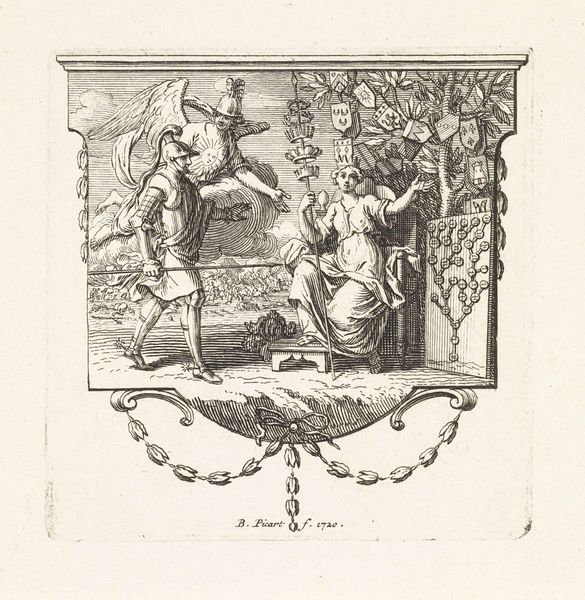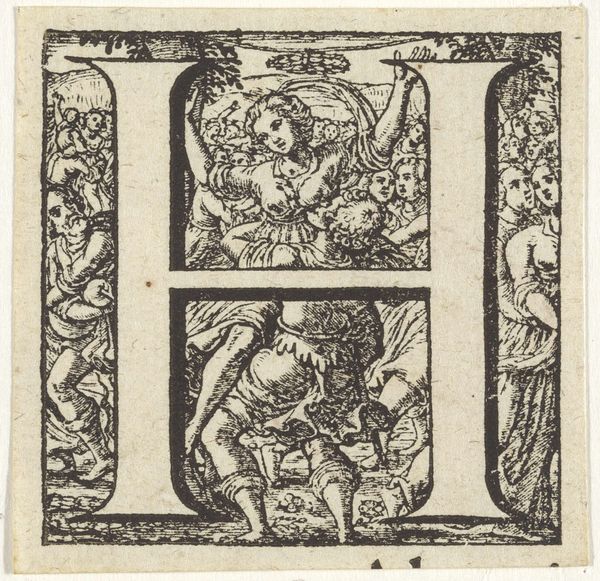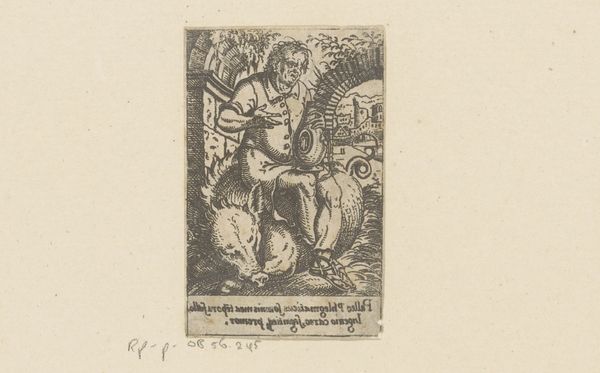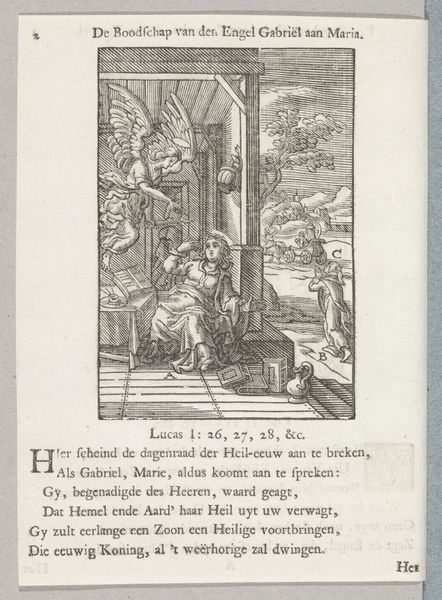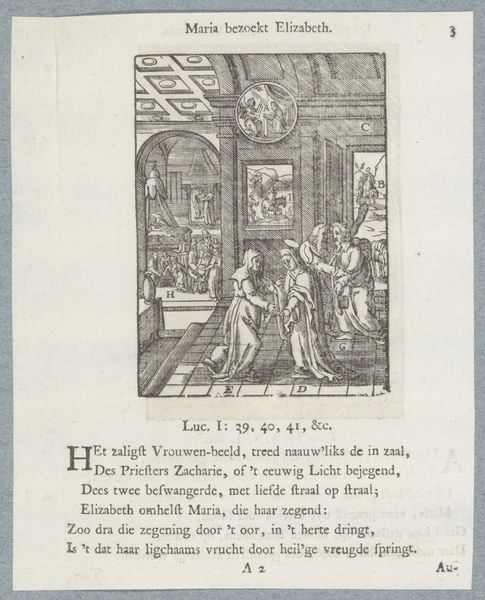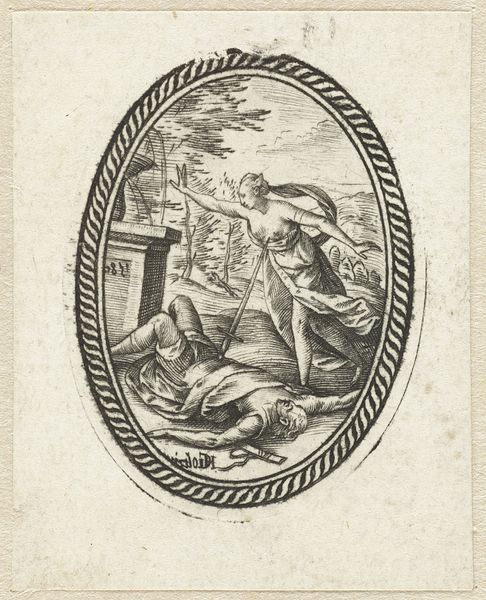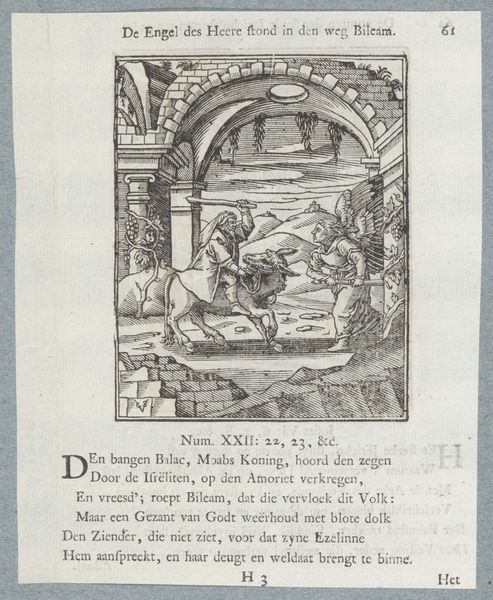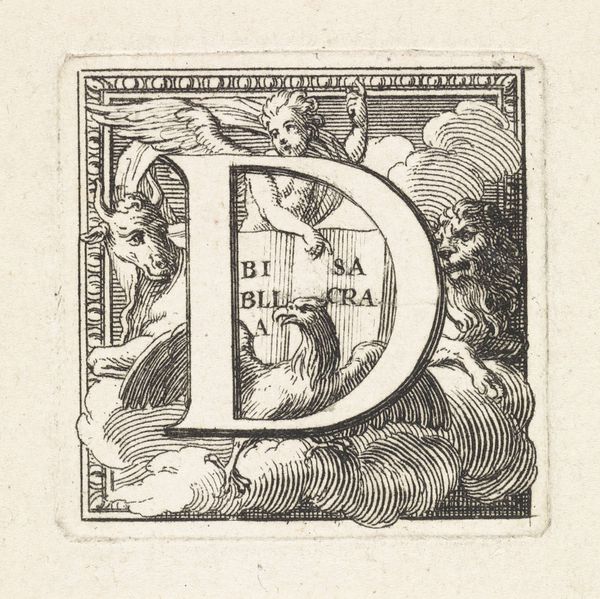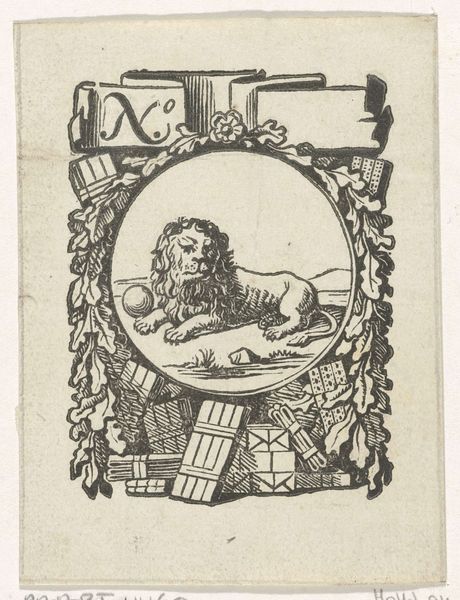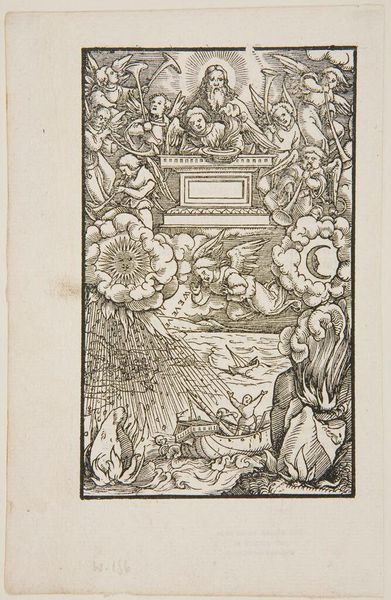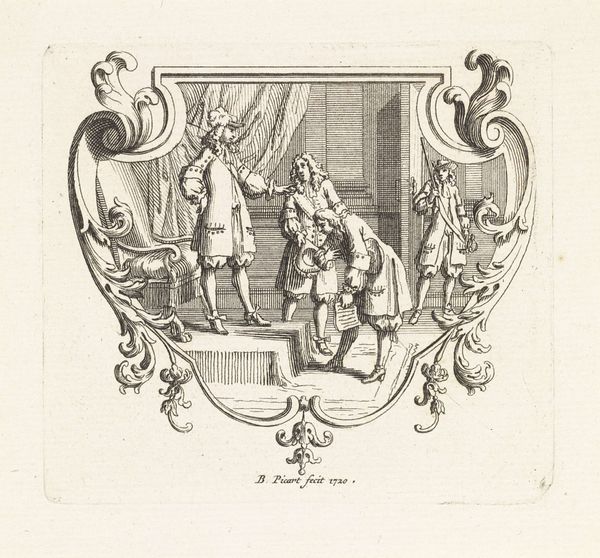
Letter D met op de achtergrond het stukslaan van het standbeeld van Karel I, koning van Engeland 1683 - 1733
0:00
0:00
print, engraving
#
baroque
# print
#
figuration
#
line
#
history-painting
#
engraving
Dimensions: height 42 mm, width 38 mm
Copyright: Rijks Museum: Open Domain
Editor: Here we have Bernard Picart's engraving from the late 17th-early 18th century, titled "Letter D met op de achtergrond het stukslaan van het standbeeld van Karel I, koning van Engeland." The letter D looms over the chaotic scene of destruction. How do you interpret the interplay between text and image here? Curator: I'm immediately drawn to the labor embedded in this piece. Consider the artist, Picart: the process of engraving, the physical act of carving lines into a metal plate to create this image for mass production. How does the means of production itself – engraving – influence our understanding of the toppling of a monarch? Editor: That's an interesting point. It was intended as a multiple. How does that change how we view this work and how we interpret its significance, especially relating to the destruction of power? Curator: Exactly. This wasn't a unique painting for a noble's collection. The printmaking suggests a wider dissemination, a call for revolution perhaps aimed at the working classes. Who profits from this distribution of these engravings, who is consuming them? And at what price could you obtain it? All interesting aspects of considering its place in society at the time of creation. The dismantling of the statue mirrors, in a way, the deconstruction of traditional hierarchies within art itself. Engraving, as a 'lower' art form, literally surrounds and perhaps even symbolically undermines the established power. What do you think? Editor: I see what you mean. The "D" doesn’t just depict; it becomes part of the very act of dismantling symbols of authority. I initially saw a scene of chaos and revolt, but I can also appreciate how the print itself serves the message it conveys! Thank you. Curator: Absolutely. And by analyzing the printmaking process, the paper, ink, distribution networks, we can gain insights into the social and political undercurrents that fueled the event depicted and that influenced Picart to make and distribute such artwork. It shows how interconnected art, labor, and socio-political events are.
Comments
No comments
Be the first to comment and join the conversation on the ultimate creative platform.
